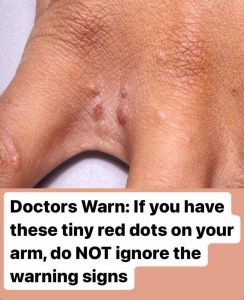There’s a tiny parasite quietly spreading across the globe, causing red spots on the skin and affecting millions each year. It isn’t deadly, but it’s stubborn, contagious, and often mistaken for something else. Sarcoptes scabiei (Scabies). The World Health Organization (WHO) classifies scabies as a neglected disease affecting 200 million people yearly. Even though it’s easy to treat, far too many people suffer for long because doctors miss it. The problem can mess up your sleep and how you feel day to day.
These mites are most active while you sleep, crawling and burrowing into the skin, laying eggs. Early signs include small red spots and thin, wavy lines. Look for groups of bumps that look like pimples, bug bites, or small blisters. The most common places to check are between the fingers, around the wrists, elbows, armpits, waist, and private areas. In children, the rash can also appear on the face, scalp, palms, and soles of the feet. Scratching can cause sores that could get infected. Remember, scabies symptoms may not show up for 4 to 6 weeks after contact.

Understand What Makes This Unique
It’s easy to mistake scabies for eczema, hives, or other rashes. A lot of doctors miss it the first time because its symptoms look like something else. But without the right treatment, the symptoms won’t go away. The intense itching happens because your body is having an allergic reaction to the mites, their eggs, and their waste.
Scratching only makes things worse and can lead to skin infections. If you have never had the parasite before, it can take two to six weeks for symptoms to show up. But if you have had it before, symptoms can appear much faster, sometimes in just one to four days. There is also a severe form called crusted scabies. It causes thick crusts on the skin and can be full of thousands of mites.